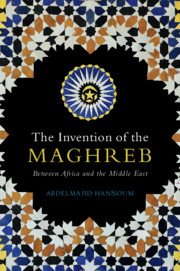Book contents
- The Invention of the Maghreb
- The Invention of the Maghreb
- Copyright page
- Dedication
- Contents
- Maps
- Tables
- Acknowledgments
- Introduction
- 1 Geographic Imagination and Cartographic Power
- 2 The Trace and Its Narratives
- 3 Language, Race, and Territory
- 4 Naming and Historical Narratives
- 5 Strategies for the Present
- 6 Cracks
- Postscript
- Bibliography
- Index
1 - Geographic Imagination and Cartographic Power
Published online by Cambridge University Press: 13 May 2021
- The Invention of the Maghreb
- The Invention of the Maghreb
- Copyright page
- Dedication
- Contents
- Maps
- Tables
- Acknowledgments
- Introduction
- 1 Geographic Imagination and Cartographic Power
- 2 The Trace and Its Narratives
- 3 Language, Race, and Territory
- 4 Naming and Historical Narratives
- 5 Strategies for the Present
- 6 Cracks
- Postscript
- Bibliography
- Index
Summary
This chapter looks at how archeology participated in the invention of the Maghreb. If maps provided the form of the region, archeology provides the content of this form. Colonial archeologists stressed the Roman past, with its monuments and artifacts, from which they created an entire narrative tradition that connects the region with a particular past in the same way France was connected to Rome. Archeology provides the means by which the region was invented as a Roman and thus a Western area unseparated from Europe in the past, and attached to it in the present.
- Type
- Chapter
- Information
- The Invention of the MaghrebBetween Africa and the Middle East, pp. 30 - 75Publisher: Cambridge University PressPrint publication year: 2021

